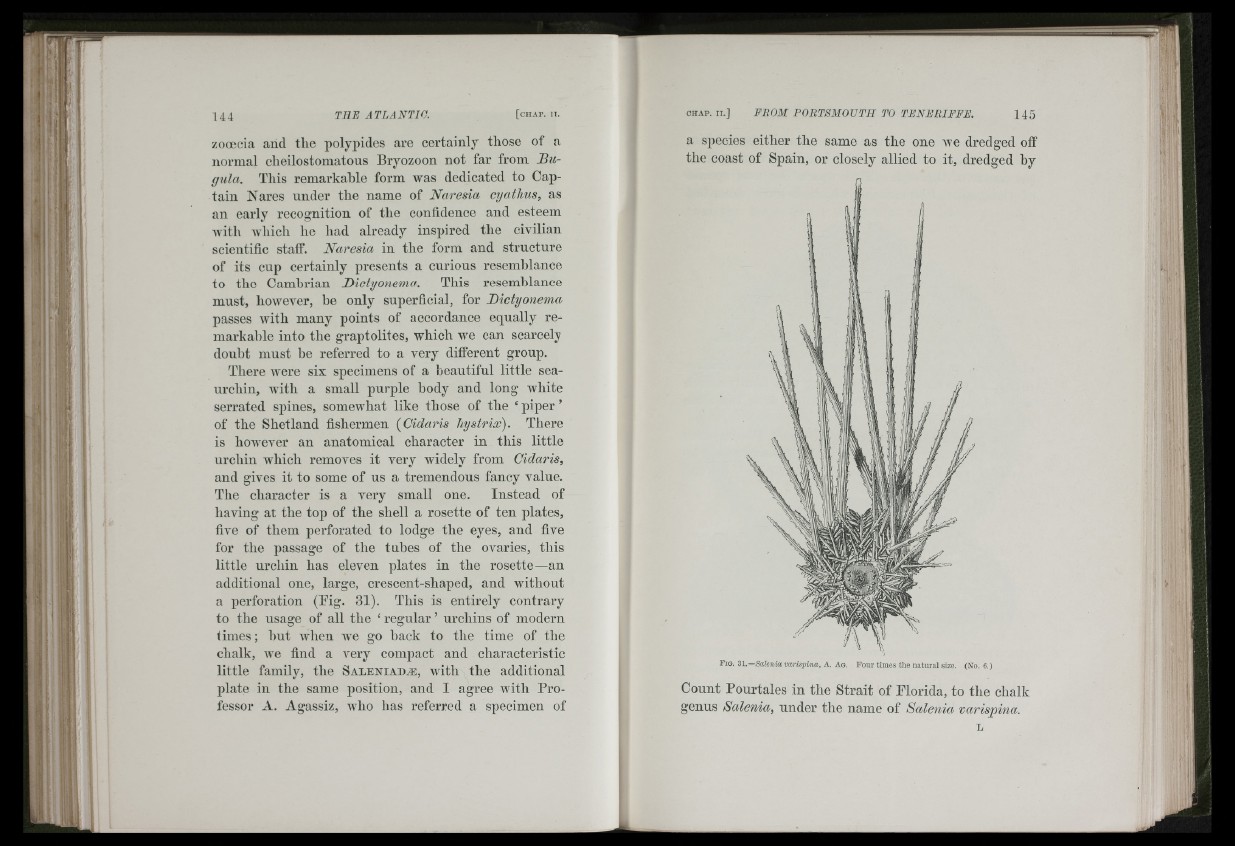
liil
i "
I !•
Li
I
; ;
t t ¿1
' l ! i if
■|G
i t Ii
I
1
zooccia and the polypides are certainly those of a
normal cheilostomatous Bryozoon not far from J3u-
gula. This remarkable form was dedicated to Captain
Nares under the name of Naresia cyathus, as
an early recognition of the confidence and esteem
with which he had already inspired the civilian
scientific staff. Naresia in the form and structure
of its cup certainly presents a curious resemblance
to the Cambrian Dictyonema. This resemblance
must, however, he only superficial, for Dictyonema
passes with many points of accordance equally remarkable
into the graptolites, which we can scarcely
doubt must be referred to a very different group.
There were six specimens of a beautiful little sea-
urcliin, with a small purple body and long white
serrated spines, somewhat like those of the ‘ piper’
of the Shetland fishermen {Cidaris hystrix). There
is however an anatomical character in tliis little
urchin which removes it very widely from Cidaris,
and gives it to some of us a tremendous fancy value.
The character is a very small one. Instead of
having at the top of the shell a rosette of ten plates,
five of them perforated to lodge the eyes, and five
for the passage of the tnhes of the ovaries, this
little urchin has eleven plates in the rosette—an
additional one, large, crescent-shaped, and without
a perforation (Fig. 31). This is entirely contrary
to the usage of all the ‘ regular ’ urchins of modern
times; hut when Ave go back to the time of the
chalk, Ave find a very compact and characteristic
little family, the Saleniadhi, Avith the additional
plate in the same position, and I agree with Professor
A. Agassiz, who has referred a specimen of
CHAP. I I . ] F R O M P O R T S M O U T H T O T E N E R I F F E . 145
a species either the same as the one aa'c dredged off
the coast of Spain, or closely allied to it, dredged by
F ig . i l .—S a le n ia v a r is p in a , A. Ag. P our times the n a tu ra l size. (No. 6.)
Count Pourtales in the Strait of Florida, to the chalk
genus Salenia, under the name of Salenia varispina.
L
i J